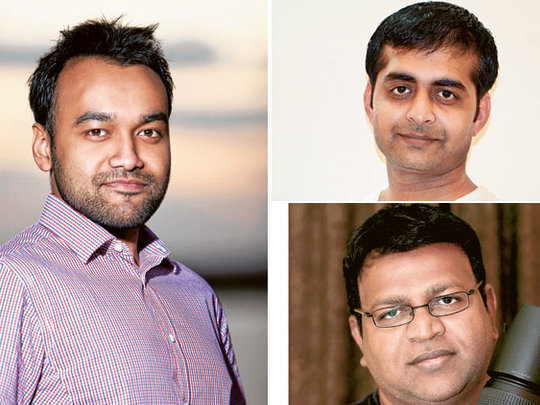
Photography is a mathematical equation — it is the sum of everything that is happening at the moment when the shutter is clicked.
The action, the emotion on the person's face, the background that adds to the scene, the lighting that affects the mood and the angle; all of these elements need to happen at the precise second you take the photograph.
Gulf News readers solved this equation when they submitted their pictures during October.
Deputy Picture Editor Sankha Kar said: "I have noticed that many of the pictures featured people's daily lives.
"There is a human element to them and an emotional attachment to the subjects."
What makes a picture special is the action being captured.
One chance
Kar said: "You have one chance to take the perfect shot and that chance might not happen again.
"The emotions and the action need to be there at the exact moment you take the picture."
This is what many of our readers managed to do.
Kar added: "If you look at a photograph and the subject touches your heart then it has served its purpose."
According to Kar, a photographer could have the best camera and take the perfect shot with the appropriate lighting and angle.
"However, what makes the picture worthwhile is the subject — at the end of the day that is what the picture is about".
Photography is all about playing with light. When the available light is insufficient, the most easily available alternative source is the camera's flash.
Nowadays, almost all cameras come equipped with a built-in flash. Some people will find it very small, less powerful, with no bounce facility and so on. The main problem with these flashes is that they are fitted directly on top of the camera and can neither create any angular shadow nor indicate the texture of the subject's dimension. All they can do is create a bad shadow when the background is too close. Yet, these built-in camera flashes are now fitted in almost all basic manoeuvring facilities.
However, if cleverly used, these flashes can boost the quality of a picture. One can create drama in the pictures with these flashes, provided they use some special features like the ‘Rear Curtain sync' - particularly during sunset or while capturing any moving object.
In normal setting the flash fires at the beginning of the exposure, while in Rear Curtain mode the flash fires at the end. For this, you have to use a longer exposure (slow shutter speed).
The moment you click the shutter, light starts coming in through the opening and the moving objects or lights start creating a trail or streaks, just like panning. And just before it closes, the flash will fire to freeze your main subject absolutely sharp and still. If you take a picture of a moving car at night with the Rear Curtain mode, you will see the crisp shot of the car, with a nice light trail behind.
Built-in flashes are very good for fill-in. It can add life to the high shadow parts of the picture, taken in harsh daylight.
William Shakespeare once said: "For there is nothing either good or bad, but thinking makes it so."
Nahidul Haq
Picture published: October 30
Profile: The medical doctor discovered his passion for photography two months ago when he met the photographer who was hired to take pictures of his sister's wedding.
Haq, a 26-year-old Bangladeshi national, said: "I was fascinated with the photographer's enthusiasm in using the camera and his subjects — crafting beautiful shots with every click."
At that moment, Haq decided to purchase a camera and discover the art of photography. He said: "I love taking pictures of anything with a good composition."
Reason for winning:
Deputy Picture Editor Sankha Kar said: "This picture was not arranged, and it was not chosen based on how it was taken. It was all about the expression on the children's faces — it touches the heart."
Jithil Raj
Picture published: October 9
Profile: Jithil Raj was always fascinated by photography. His earliest memories were of him looking at pictures taken by his uncle, who was a photographer.
He said: "Throughout my childhood I remember looking at many images and the ones with many colours always caught my attention."
Raj, an Indian national, made it a priority to improve his photographic skills.
So, he joined the Friday Shoot Out group to learn new techniques.
The 32-year-old sales manager takes his photography seriously and loves taking pictures of wildlife.
He said: "I always concentrate on this subject. I love going out into the wild and taking photographs of nature, including birds and animals."
Reason for winning:
Deputy Picture Editor Sankha Kar said: "The timing is what made this picture unique. To take such a photograph you need patience to wait for the right moment to take the picture. The movements, the action and even the water drops contributed in telling the story."
Lal Nallath
Picture published: October 11
Profile: Lal Nallath, an Indian national residing in Dubai, has been taking photographs since 2003.
His love for this art has been there since he was a child.
He said: "When I got into the corporate environment, this colourful world that I was interested in faded away."
To keep his interest in photography alive, Nallath, a 41-year-old website designer, formed a group called ‘FSO' or Friday Shoot Out, which has 90 members.
Nallath loves taking photos of landscapes, as they always change.
Reason for winning:
Deputy Picture Editor Sankha Kar said: "I chose this picture because of the expression on the man's face. The photograph shows the man's hardship and what he has gone through."








